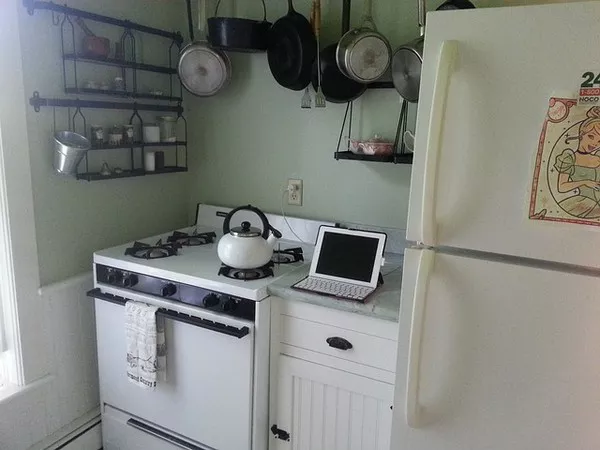In the world of Heating, Ventilation, and Air Conditioning (HVAC), the concept of refrigeration plays a pivotal role in maintaining optimal indoor comfort and climate control. Refrigeration is a fundamental principle that underlies the cooling and dehumidification processes in HVAC systems, enabling them to create comfortable and controlled environments for residential, commercial, and industrial spaces. This article delves into the intricate workings of refrigeration in HVAC, shedding light on its importance, components, and underlying principles.
The Essence of Refrigeration in HVAC:
Refrigeration serves as the heart of HVAC systems, allowing for the transfer of heat from one area to another and enabling the removal of excess heat from indoor spaces. It plays a crucial role in maintaining temperature, humidity levels, and air quality within a specified range, promoting comfort, health, and productivity. By harnessing the principles of thermodynamics and fluid dynamics, refrigeration systems achieve cooling effects even in the hottest climates.
Key Components of a Refrigeration Cycle:
At the core of refrigeration in HVAC lies the refrigeration cycle, a continuous process that facilitates the transfer of heat. This cycle comprises four essential components: the evaporator, compressor, condenser, and expansion valve.
Evaporator: The evaporator is responsible for absorbing heat from the indoor air, causing the refrigerant to evaporate and transform into a low-pressure vapor. As the refrigerant absorbs heat, it cools the air passing over the evaporator coils.
Compressor: The vaporized refrigerant is then compressed by the compressor, increasing its pressure and temperature. This pressurized gas is then ready for the next stage of the cycle.
Condenser: In the condenser, the high-pressure, high-temperature refrigerant gas releases heat to the surrounding environment, causing it to condense and transform into a high-pressure liquid. This process releases the heat absorbed from the indoor air to the outdoors.
Expansion Valve: The high-pressure liquid refrigerant then passes through the expansion valve, where it undergoes a sudden drop in pressure. This causes the refrigerant to expand and cool rapidly, preparing it for the evaporator stage once again.
The Role of Refrigerants:
Refrigerants are the lifeblood of the refrigeration cycle, facilitating the efficient transfer of heat. These chemical compounds possess properties that allow them to change state at low temperatures, enabling them to absorb and release heat as they transition between liquid and vapor phases. Over the years, various types of refrigerants have been used in HVAC systems, each with distinct advantages and environmental considerations.
While older refrigerants like hydrochlorofluorocarbons (HCFCs) and chlorofluorocarbons (CFCs) have been phased out due to their harmful impact on the ozone layer, modern refrigerants focus on minimizing environmental impact. Hydrofluorocarbons (HFCs) have been widely used as replacements, but concerns about their high global warming potential have led to the development of more eco-friendly alternatives, such as hydrofluoroolefins (HFOs) and natural refrigerants like ammonia and carbon dioxide.
Achieving Energy Efficiency:
Energy efficiency is a key consideration in HVAC systems, and refrigeration plays a significant role in optimizing energy consumption. Advanced technologies, such as variable-speed compressors and precise temperature and pressure controls, enhance the efficiency of refrigeration cycles. These technologies allow HVAC systems to adapt to varying loads and conditions, reducing energy consumption and operational costs.
Controlling Humidity:
Beyond temperature control, refrigeration also plays a vital role in managing indoor humidity levels. As warm air passes over the cold evaporator coils, moisture in the air condenses on the coils, leading to dehumidification. This process helps maintain comfortable and healthy indoor air quality by preventing excessive humidity that can lead to mold growth and other issues.
Applications Beyond Cooling:
While refrigeration is primarily associated with cooling, its applications extend beyond temperature control. In colder climates or during certain seasons, HVAC systems equipped with heat pumps can reverse the refrigeration cycle to provide heating. By extracting heat from the outdoor air or ground and transferring it indoors, heat pumps offer an energy-efficient way to warm indoor spaces.
Environmental Considerations:
The environmental impact of refrigeration has gained significant attention in recent years due to concerns about climate change and ozone depletion. As HVAC systems play a substantial role in energy consumption and greenhouse gas emissions, the choice of refrigerants and the adoption of eco-friendly technologies are critical steps toward reducing environmental harm. Regulations and industry standards continue to evolve to encourage the use of low-global-warming-potential refrigerants and the adoption of energy-efficient practices.
In Conclusion:
Refrigeration is the cornerstone of modern HVAC systems, enabling the creation of comfortable and controlled indoor environments. By harnessing the principles of heat transfer and fluid dynamics, refrigeration cycles regulate temperature and humidity, ensuring optimal conditions for human comfort and well-being. As technology advances and environmental considerations shape the HVAC industry, the evolution of refrigeration continues to drive innovation toward more sustainable and efficient solutions.

